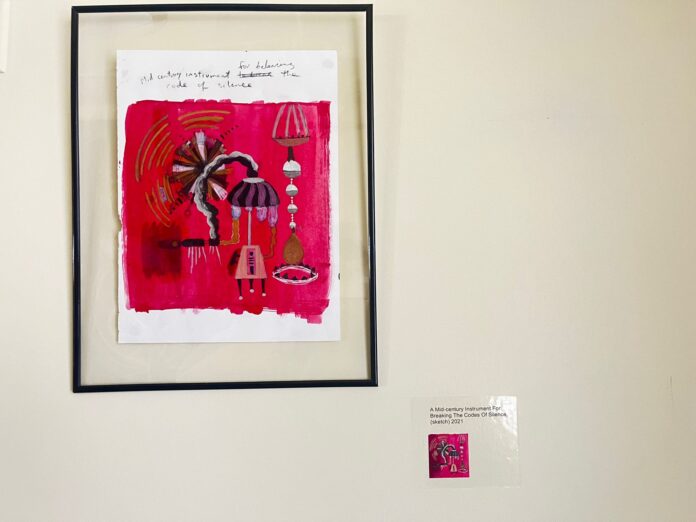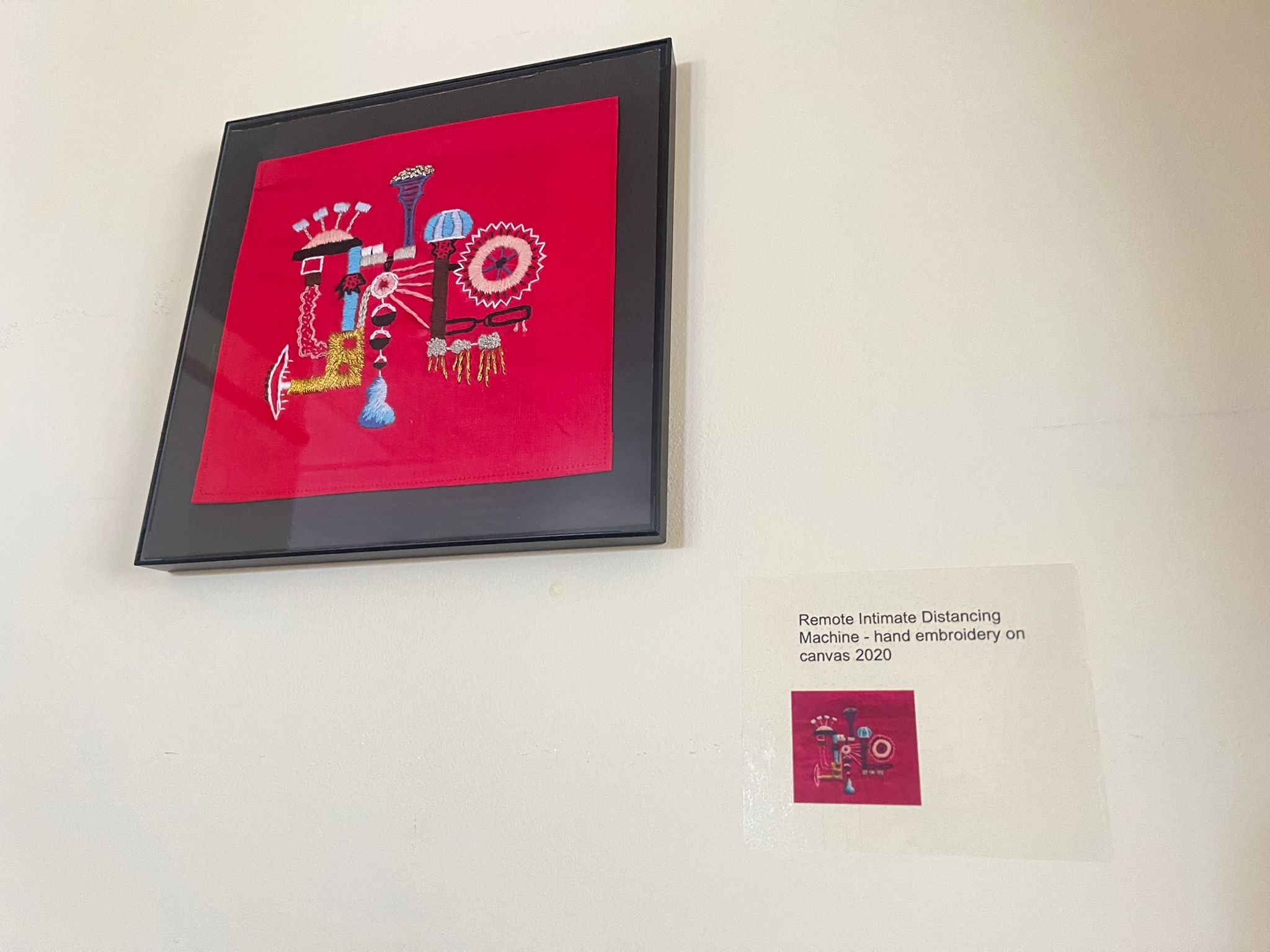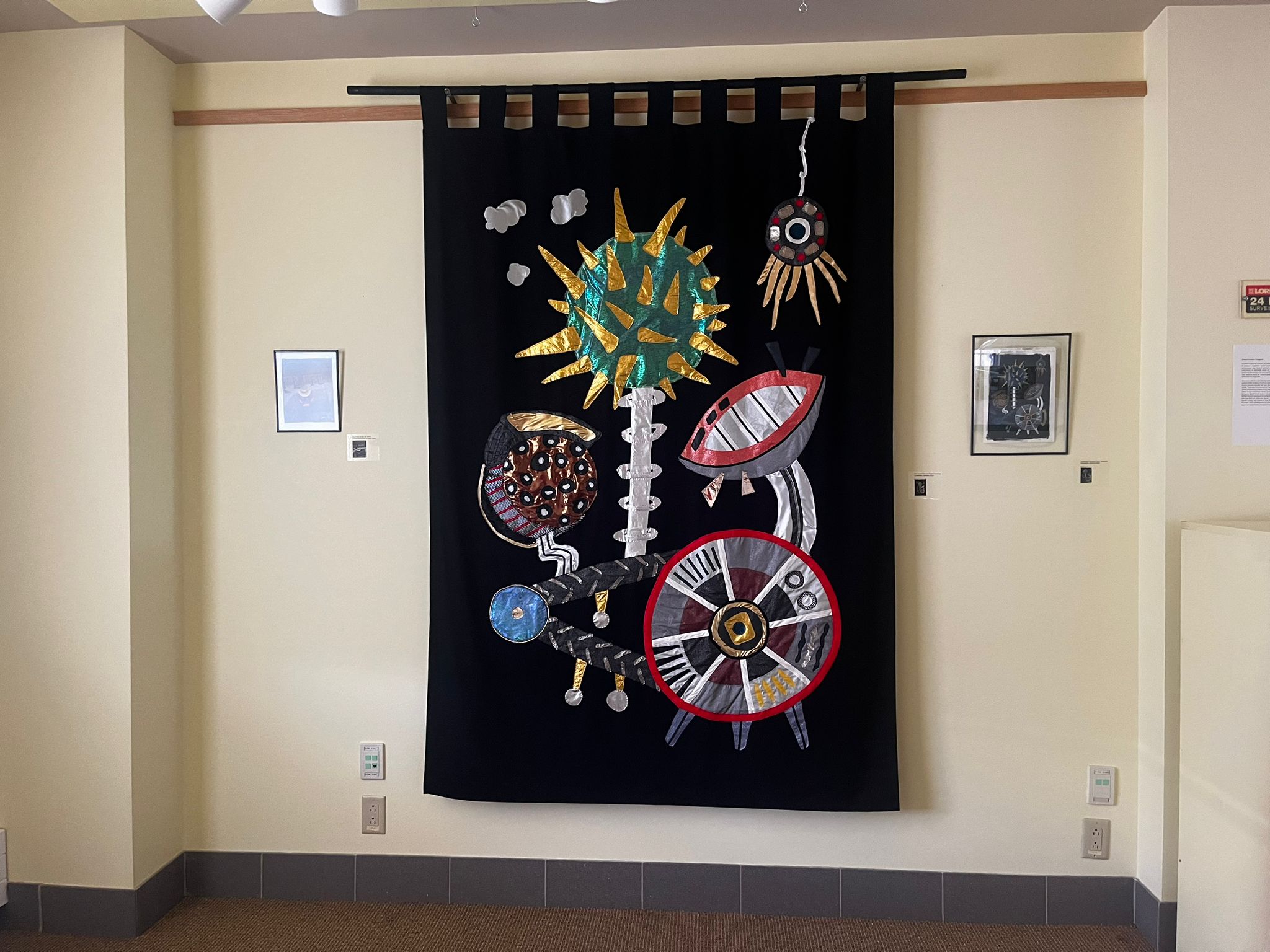

On Oct. 17, Pandora Vaughan, a U.K. and Canadian artist, talked to St. Thomas University students about her journey as an artist and shared her knowledge on creating mechanical art as a solution to imagined problems.
Vaughan is known for working with invented spaces that explore the broken sides of localized urbanity. Most of her work uses plans of architecture as a starting point to imagine coping devices for physically and psychically ruinous issues.
Her exhibit is titled Total Non-Stop Action and is currently on display in the Yellow Box Gallery at STU in Dr. Daniel O’Brien Study Hall. This exhibit features colourful banners of imaginary machines meant to bring up the spirit of people while coping with the COVID-19 pandemic.
“If we hadn’t been in the middle of the pandemic and the lockdowns and the craziness that everyone was going through, they wouldn’t have happened,” she said.

Vaughan first presented her Total Non-Stop Action exhibit at the Horse Hospital in London in 2022. She shared she was excited her exhibition could reach many audiences that interpret her art in different ways.
“Some people just like them because they’re shiny and pretty and some people like them because they have something that they can relate to,” she said. “I’m happy with them because I think they’re successful in lots of different ways.”
Vaughan’s interest in outdoor art and architecture started when she embarked on a New York trip when she was 19.
“I wanted to make work that’s colourful and outdoors and for pleasure and I also wanted to show what happened to those places when they didn’t work out the way that we want to.”
She said her Fine Arts degree pushed her to take art history courses where she delved into landscape architecture, garden history and urban design. These courses nourished her passion for exploring the environment and architectural structures in her art.
“I did a lot of walking around and looking at public spaces and I guess I just knew that I wanted to do something that incorporated more of our environment.”


Vaughan shared that she was encouraged to try as many different techniques as she could and see what fit her ideas and interests.
“It’s kind of a whirlwind of learning everything and trying to be really good,” she said. “It was quite a pressure, but it was a really excellent experience.”
Her advice for young artists is to “try and do more stuff that’s more self-generated.” She said that there’s a meeting place between art that’s commissioned, officially and paid for and street art that can be great to put out.
“There are lots of things that you can do in public that you don’t necessarily need permission for them … you’re kind of making things available.”
